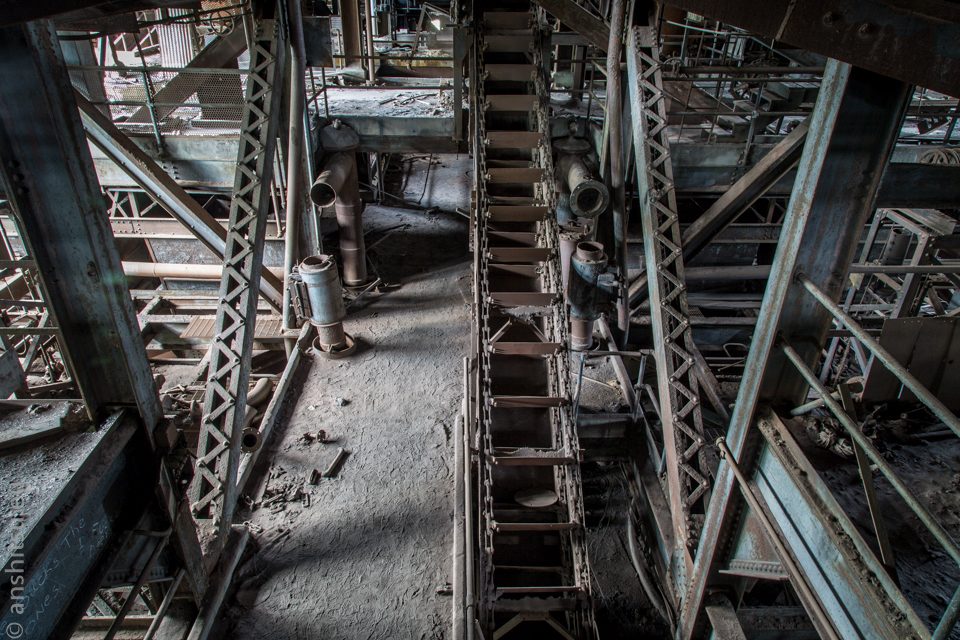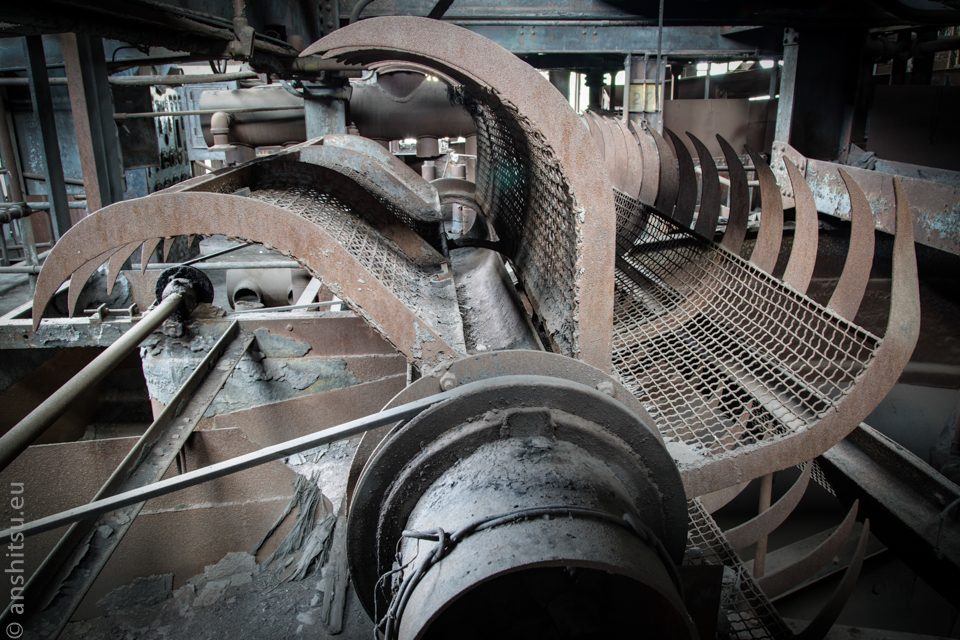- St. Nicholas Coalbreaker
The St. Nicholas Breaker was located between Mahanoy City and Shenandoah in Schuylkill County, Pennsylvania, in the southern part of the Coal Region. The breaker was once the world’s largest coal breaker, being the size of a city block and capable of processing 12,500 tons of coal per day. It has been described as having a „hulking, asymmetrical facade“.
The St. Nicholas Breaker was constructed using 3,800 cubic yards of steel and 10,000 cubic yards of concrete. It contained 1.5 miles (2.4 km) of conveyor lines, 20 miles (32 km) of pipes, 25 miles (40 km) of conduits, 118 miles (190 km) of wire, and 26,241 square feet (2,437.9 m2) of rubber belting. The construction required half of the village of Suffolk to be relocated.
The St. Nicholas Breaker was described as sounding „like thunder“ during operation. More recently, Kurt Zwikl, the executive director of the Schuylkill River Heritage Area, described the breaker as „fantastically unique building“, but in „bad shape“. It was divided into two sections that were capable of operating independently. Coal took 12 minutes to be processed by the breaker.
The St. Nicholas Breaker first became operational on March 11, 1931. It was the second breaker in the area to be named after St. Nicholas; the first was built in 1861 and torn down in 1928. When the new breaker opened, it was the „crown jewel of a relatively safer, more modern anthracite industry“. However, the breaker stopped operating in 1965.
In the early 2000s, there were proposals to make the St. Nicholas Breaker a historical site. However, such a plan was found to be prohibitively expensive, costing tens of millions of dollars. As of 2013, the breaker was owned by the Reading Anthracite Company. In 2013, part of the breaker was demolished.
As of mid-2017, the St. Nicholas Breaker is being dismantled piece by piece. The work has been ongoing for several years, but the bulk of the structure still stands. The breaker is the last remaining large-scale coal breaker in Northeastern Pennsylvania; there were once many area facilities with similar scale including the Huber and Locust Summit breakers.In 2015, numerous people came to visit the breaker before a round of demolition work began.
The St. Nicholas Breaker was demolished in a controlled explosion on March 15, 2018.
Source: Wikidepia
I had the chance to visit the remains of this impressive edifice back in 2013, basically as encore on top of my visit to another abandoned site in Pennsylvania, too bad that it now is completely gone, so please enjoy my testimony to its existence.
































